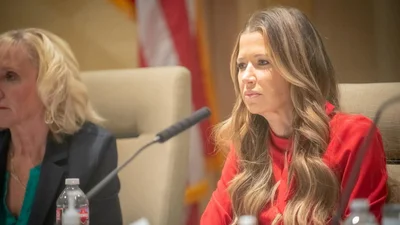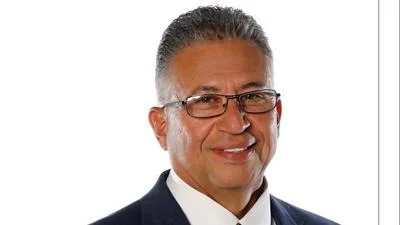Gov. Michelle Lujan-Grisham earned the worst ranking in the nation in the 2021 Laffer-ALEC Report on Economic Freedom: Grading America’s 50 Governors.
The organization uses multiple metrics to “grade” a governor’s time in office from an economic standpoint. The grades are then combined to determine the rankings of all the governors in the nation.
“This ranking does not measure the politics or popularity of governors. It simply gives an overview of the chief executives through the lens of the public policy choices in their respective states,” Jonathan Williams said in a statement to New Mexico Business Coalition.
“In the case of Gov. Michelle Lujan Grisham and New Mexico, state spending has dramatically increased since her inauguration and unemployment policies were among the worst in the nation," he added. "In addition New Mexico’s welfare dependency and educational freedom both ranked 49th out of the 50 states. Combining those factors with the governor’s past support for significant tax increases cement her ranking of 50th in our new report.”
“This is kind of, unfortunately, bad news for New Mexico, although I guess no surprise probably to a lot of you (who) have been living it, that your governor is ranked dead last in our new report,” Williams said in an interview with New Mexico Sun.
Lujan Grisham ranked low in almost all the areas that were graded.
“This is not a political ranking," Williams said. "This is a ranking based on the actual track record in the state — unemployment rate and overall economic vitality and growth, as well as things like state spending. And whether you look at fiscal policy, economic performance or executive policy rank, the three big categories in the report, she ranks among those 48, 46 and 49, respectively.
“There’s really not a category that Gov. Lujan Grisham ranks well," he added. "Unfortunately, you look at the subcategory rankings, some of the things like welfare dependency 49th out of 50 states, unemployment rate dead last, federal unemployment benefits and the handling of those, 49th. There are a lot of clues to why there’s overall 50th ranking there, but just so many big numbers when it comes to those categories that we analyze and break it out a little bit where there’s really nothing that the governor ranks even much in the top half of states.”
Williams is the chief economist and executive vice president of policy for the American Legislative Exchange Council.
He works with Arthur Laffer, “the father of supply-side economics,” who is famous for his “Laffer Curve” that suggests lowering the tax rate would strengthen the economy and lead to an increase in tax revenue.
Laffer, who served under Presidents Richard Nixon, Gerald Ford and Ronald Reagan and also was an economic adviser to Donald Trump during the 2016 campaign, leads the organization. Trump awarded Laffer the Presidential Medal of Freedom in 2019 for his work in economics. He is the founder and chairman of Laffer Associates, an economic research and consulting firm.
Donna Arduin and Stephen Moore also contributed to the report.
“This Laffer-ALEC ranking reflects the challenges New Mexicans have been facing and shows the necessity for change within our state," New Mexico Business Coalition President Carla Sonntag said in a press release. "Now that New Mexico has hit the bottom or near bottom of most quality rankings nationwide, there are myriad opportunities for improvement.
"Gov. Lujan Grisham should be looking to successful states for models of what can be incorporated here to improve where New Mexico struggles," she added. "It is critical, at this time, that personal agendas and partisan politics be set aside for the good of our people. New Mexicans deserve better.”
South Dakota Gov. Kristi Noem, a first-term Republican, was ranked first.
“We actually had Gov. Noem join us for our winter ALEC conference back in December, and I had a chance to interview for about 15 minutes on camera and talk about South Dakota,” Williams said. “Andher's approach to South Dakota and governing there has been one of more freedom and keeping taxes low and making sure that businesses weren’t labeled essential versus nonessential in the pandemic. And she went to great strides to keep South Dakota people safe but also the economy open at the same time and people connected with their livelihoods."
Noem has drawn criticism for her opposition to public health measures and mandates during the COVID-19 pandemic.
Noem’s approach is intended to create a sound business climate to keep employers in the state, Williams said.
Utah Gov. Spencer Cox ranked second, and Florida Gov. Ron DeSantis was third. Williams said they share a philosophy of less government interference with people’s lives and private enterprise.
“That’s really the commonality in those states, and you see a lot of the economic benefits that result from that approach in Florida just in the last year, with those census estimates working more than 200,000 new residents from one of the other states that have moved in to take advantage of that approach to government,” he said. “And, of course, Utah has been one of the strongest states’ economies in recent years, and the fastest-growing state in America."
While Noem, Cox and DeSantis are all Republicans, the fourth-highest rated governor, Jared Polis of Colorado, is a Democrat, which Williams said is “refreshing.”
“He has called for the elimination of the personal income tax in the state of Colorado because he realizes taxes matter and high tax rates don't redistribute income and redistribute people,” Williams said. “And he wants Colorado to be more competitive. It's very refreshing that this is a bipartisan group of the top five states. Gov. (Brad) Little from Idaho, a Republican, rounds out the top five.”
Williams said the survey changed a bit this year.
“This is only the second year that we’ve put it together, and it’s slightly different than the first iteration of that report, where we focused [on] some of the metrics around COVID-19 and direct COVID responses,” he said. “This year was a little bit more heavy on some of the traditional policy areas such as taxes and budgets and school choice, and those kind of items.”









